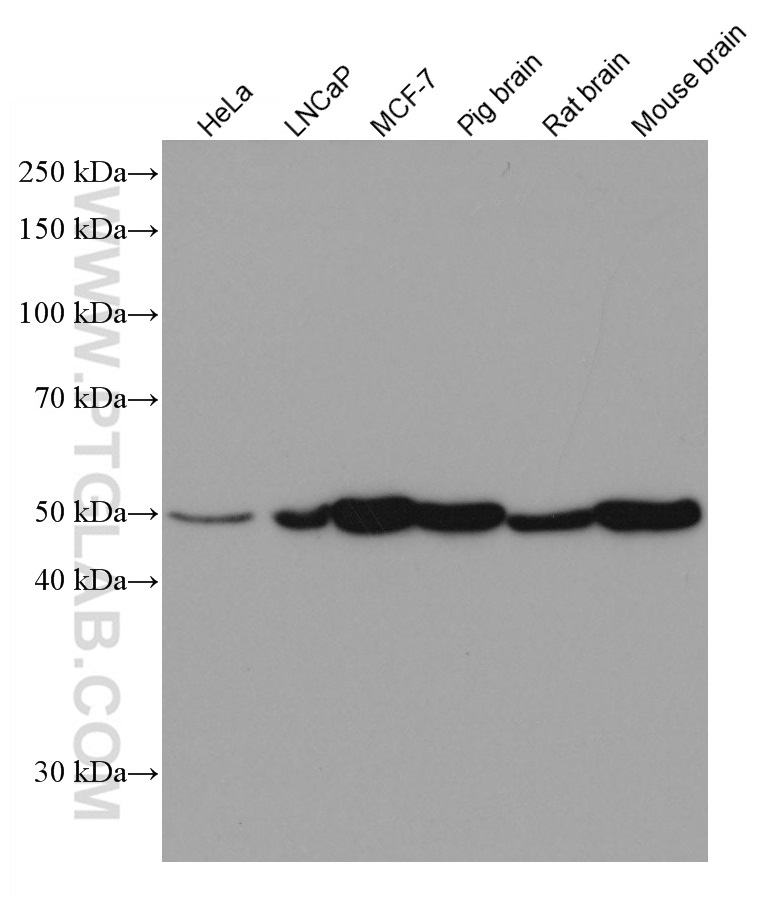验证数据展示
产品信息
67099-1-PBS targets PICK1 in WB, Indirect ELISA applications and shows reactivity with Human, Mouse, Rat, Pig samples.
| 经测试应用 | WB, Indirect ELISA Application Description |
| 经测试反应性 | Human, Mouse, Rat, Pig |
| 免疫原 | PICK1 fusion protein Ag28609 种属同源性预测 |
| 宿主/亚型 | Mouse / IgG2a |
| 抗体类别 | Monoclonal |
| 产品类型 | Antibody |
| 全称 | protein interacting with PRKCA 1 |
| 别名 | PICK, PICK1, PRKCA binding protein, PRKCABP |
| 计算分子量 | 47 kDa |
| 观测分子量 | 50 kDa |
| GenBank蛋白编号 | BC017561 |
| 基因名称 | PICK1 |
| Gene ID (NCBI) | 9463 |
| RRID | AB_2882404 |
| 偶联类型 | Unconjugated |
| 形式 | Liquid |
| 纯化方式 | Protein A purification |
| UNIPROT ID | Q9NRD5 |
| 储存缓冲液 | PBS only , pH 7.3 |
| 储存条件 | Store at -80°C. The product is shipped with ice packs. Upon receipt, store it immediately at -80°C |
背景介绍
Protein interacting with C kinase 1 (PICK1) was first cloned as a PKC-binding partner through yeast two hybrid system. PICK1 acts as a critical regulator of membrane receptors' subcellular trafficking to modulate neural processes such as learning and memory, and is widely expressed in brain, testis, heart, lung, liver, kidney and muscle. It probably binds to and organize the subcellular localization of a variety of membrane proteins containing some PDZ recognition sequence, for instance, PICK1 is a critical mediator of α-amino-3-hydroxy-5-methyl-4-isoxazolepropionic acid receptor (AMPAR) trafficking in neural synapses. PICK1 expression on D-serine release and glutamate transport in astrocytes suggests a potential implication of PICK1 in the progression of amyotrophic lateral sclerosis (ALS). PICK1 may also participate in breast cancer development through inhibition of TGF-β signaling.
